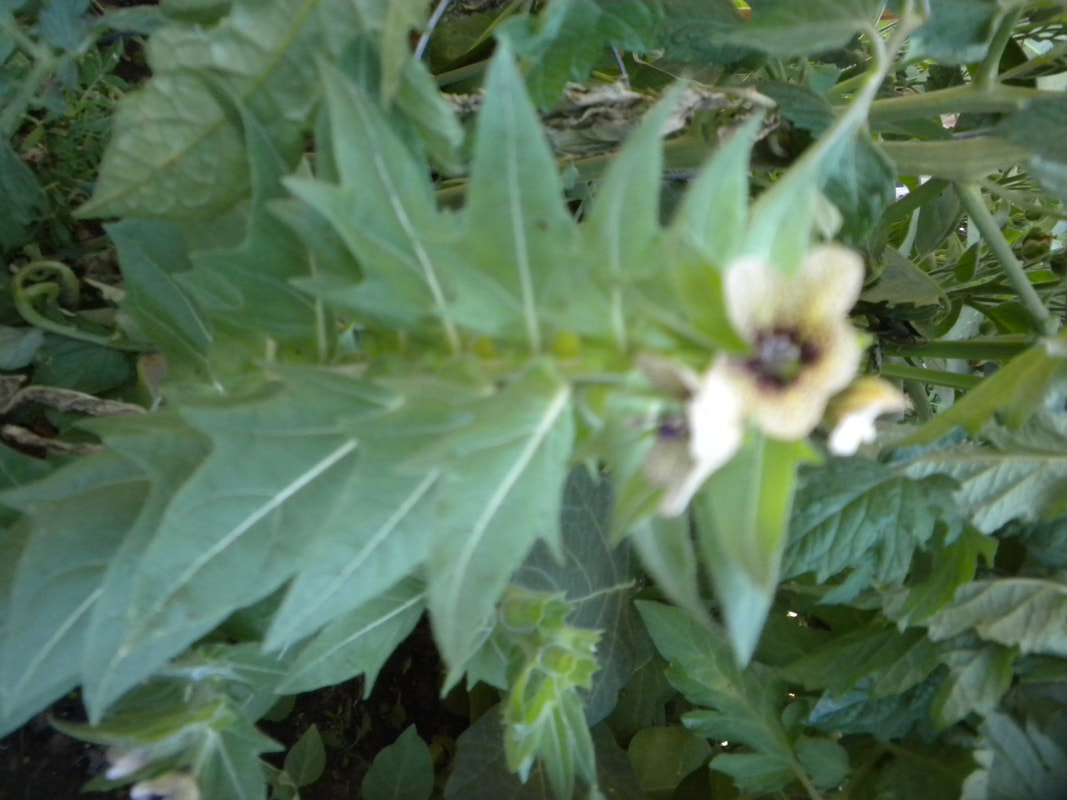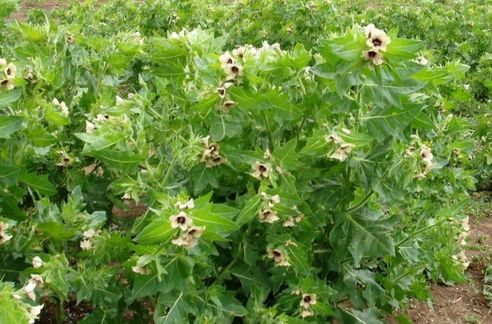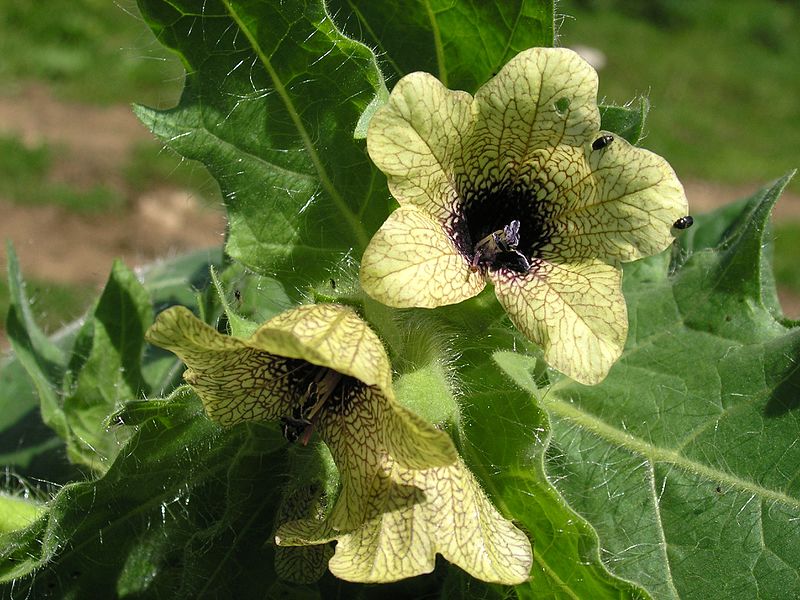Black Henbane: Lore, Traditional Uses and Growing Information:
Hyoscyamus niger is an annual or biennial herb growing up to one yard high that produces veined yellow flowers and large quantities of seeds. The flowers grow one after the other on single stalks arching upwards.
All parts of the plant, including the seeds, contain scopolamine, atropine, and hyoscyamine, and like many Nightshades, can be medicinal, hallucinogenic, as well as deadly poisonous.
Henbane, also known as stinking nightshade or black henbane, is a plant of the family Solanaceae that originated in Eurasia; now globally distributed.
Black henbane can be directly sown in the garden after the last frost. It can also be started in 4-inch pots and then transplanted to the garden. Water daily until established. Mature plants need only weekly watering. Full sun. Well-drained soil.
Category: Annual, biennial.
Native Origin: Europe and Asia; now into North America.
Favorite Habitat: Sunny meadow with loam soil or woody edge-lands.
Soil Requirements: Prefers nitrogen-rich, moist, well-drained soil.
Soil mix: Composted manure/peat moss/sand/ perlite mix.
Sun: Full sun.
Water: Weekly watering. Not drought tolerant.
Fertilization: General fertilizer when flowering.
Planting Time: Spring through summer, after last frost.
Spacing: Six inches to one foot.
Pruning: Not applicable
Height: 12-18 inches
Hardiness: Not frost hardy.
Seed Germination time: 3-15 days.
Seed Germination Methods: Flats: plant seeds 1mm deep under peat moss and perlite.
Seed Pollination: Wind, bees.
Plant Propagation Methods: Seed.
Harvest: Matures at 90 days. Harvest leaves in Summer or Fall after flowering.
Bloom time: Summer to fall.
Pests: None noted.
USDA Temperature Zones: Grows all over the continental USA as an annual.
Plant Spirit Message:
“I am a pretty girl, but be careful.”
History:
Henbane was historically used in combination with other plants, such as mandrake, deadly nightshade (belladonna), and the Daturas as an anesthetic potion, as well as for its psychoactive properties in "magic brews." These psychoactive properties include visual hallucinations and Soul travel. Its usage was originally in continental Europe, Asia and the Arab world, though it did spread to England in the Middle Ages. The use of henbane by the ancient Greeks was documented by Pliny. The plant, recorded as Herba Apollinaris, was used to yield oracles by the priestesses of Apollo. Henbane was found in a Neolithic funerary site
The name henbane dates at least to A.D. 1265. The botanist Linnaeus gave this plant its Latin name in the 1753, basing it on its former name of "dioskyamos," or God's bean. The henne origin of henbane refers to death and is tied to the name of the German god, Henne. Henne bean. Bean of death.
In Greek mythology, the dead who wander the shores of the River Styx are crowned with henbane. The Oracle of Delphi was said to breathe in the smoke in order to divine the future. Henbane was used ritually in ancient Scotland. Henbane is associated with beer in the Alps, where it still carries the name Bilsenkraut, or beer lettuce. In that locale, a goddess name Bil is also known as the Fairy of Henbane. In the Middle Ages, Agrippa recognized henbane's connection to the dead by including it in an incense designed to raise spirits. This magick herb is still used to consecrate ritual vessels and is an ingredient in incense for bringing rain. Henbane is still an ingredient in incense burned as a part of shape-shifting work.
Like Datura and other members of the Nightshade family, Henbane contains atropine. While toxic, check out the movie "The Rock" about terrorists with deadly nerve gas. The nerve gas antidote is pure atropine, injected into the heart of the victim to save his life. Atropine has medicinal value, and: it can also kill you.
Atropine is one of the ingredients in the classic and very secret Witch's Flying Formulas. The traditional Flying Ointment was a combination of belladonna, henbane, Datura, mandrake, opium poppy, etc., all carefully cooked in duck fat. Once done, a small amount was then rubbed onto a stick which was held between the labia or genitals for easier absorption, as seen in the drawing pictured above. Not quite flying on a broomstick, but close enough to launch a legend...
Atropine intoxication typically produces a complete inability to differentiate reality from fantasy (true delirium, as contrasted to mere hallucinations); hyperthermia; tachycardia; bizarre behavior; and severe mydriasis with resultant painful photophobia that can last several days. Effects can last for over a week. Hyper- or hypothermia can kill overnight. Delirium will isolate you completely from the reality of everyone else in your world.
© Copyright 2012-2024, Shaman Don, White Buffalo Trading, All rights reserved






